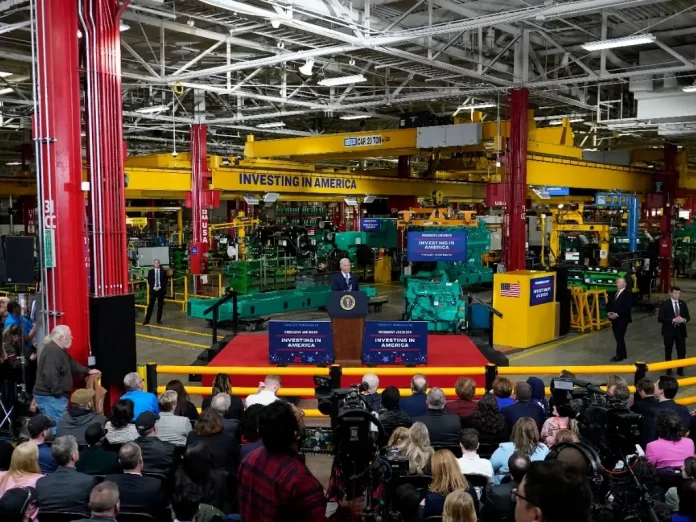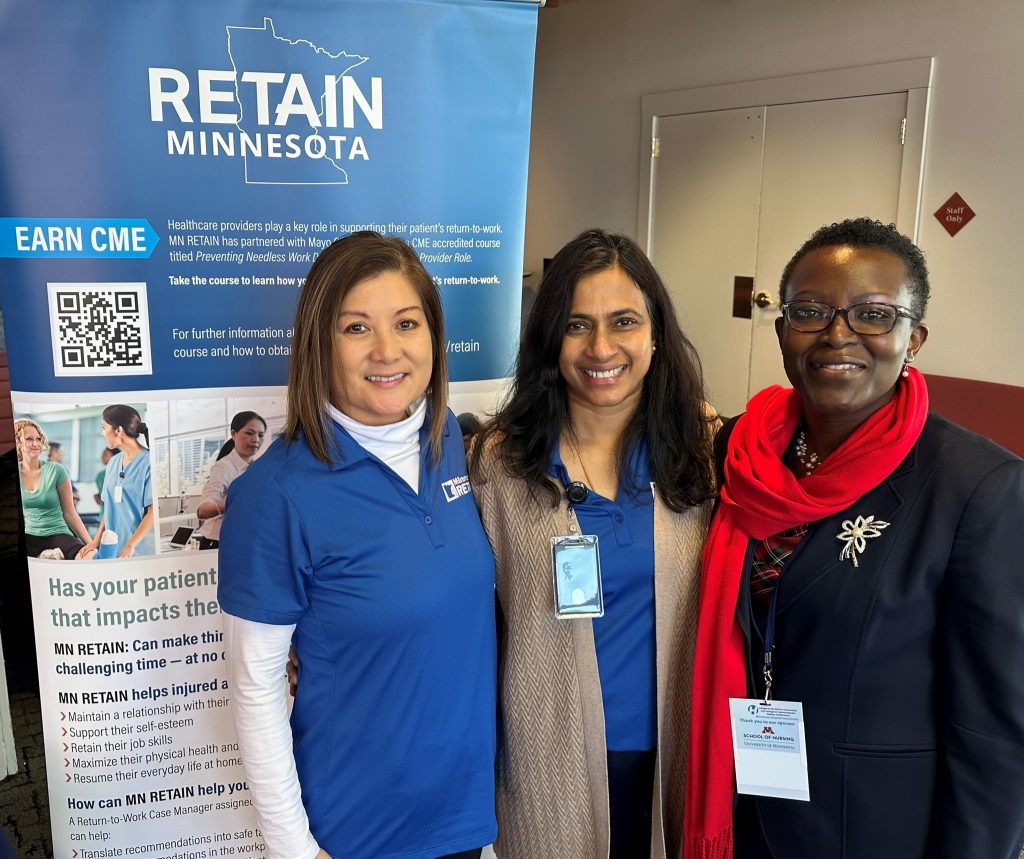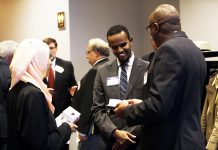

As a longtime restaurant manager, Victor Obisakin knows what it’s like to stay busy on your feet. Anyone who works in the industry knows that there’s an art to managing staff and customers while addressing unexpected issues – all of which happens at a rapid pace.
For Victor, his world changed in ways he did not expect when he broke his leg playing soccer, a sport he has engaged in for all his life in 2019.
What followed were multiple surgeries that took him out of work, effectively ending his career at a job he loved.
While recovering, he took some part time virtual jobs to stay busy and bring some income to supplement what his wife was bringing home. That however brought new complications as it meant they could no longer qualify for social relief programs that could relieve the reduced income burden on the four-person household. Him and his wife have two young children. The best option was for him to not work at all.
“I am not used to not working and I could never imagine that I would get injured and be put out of work,” Victor said. “It was not just a leg injury, even my mental wellbeing got injured when I found I could no longer work.”
Despite these challenges, Victor considers himself fortunate to have found an initial team of occupational and environmental medicine providers that were able to help him recover after his injury. After moving to the Twin Cities for his wife’s new job, the next step in Victor’s journey was continuing his recovery and exploring possibilities to reenter the workforce. That’s when Victor connected with MN RETAIN.
MN RETAIN, short for Retaining Employment and Talent after Injury/Illness Network, is a research program measuring the effectiveness of providing early supports for ill and injured workers. Funded through a grant from the U.S. Department of Labor and the Social Security Administration, only five states nationwide were selected to participate in the program. The program aims to enroll 3200 MN workers by May 2024. Individuals who enroll are randomized to either a control group or an intervention group. The control group workers are provided a list of resources to help them make connections on their own that could help with return to work. The intervention group participants are assigned a MN RETAIN return-to-work case manager who connects them to services they may need. Victor is in the intervention group of the program working with a RETAIN return to work case manager.
In Minnesota, RETAIN, is led by the Minnesota Department of Employment and Economic Development (DEED).
Ms. Nancy Omondi, Director of workforce development programs at the agency leads Minnesota’s RETAIN system which is comprised of multiple state agency partners, healthcare organizations and workforce development agencies. “MN RETAIN’s purpose is to get those who are out of work due to an injury or illness, back as soon as medically safe,” Omondi stated. “Programs like these are critical to the state’s economic recovery and growth,” she continued.

The program facilitates communication between employees, employers and health care providers through a Return-to-Work Case Manager who is a member of the clinical team. As of April (2023), more than 1,100 workers have participated in the program.”
“If someone has an injury or illness that prevents them from going to work, they can call or email us to see if this program is viable for them” said Lensa Idossa, a DEED Program Manager. Workers must meet the eligibility criteria to be considered. Workers in the program are randomly put into two groups. One group will receive free RETAIN services funded through the grant to help them get back to work and the other will be given information on CareerForce services.
Drs. Laura Breeher and Clayton Cowl from the Mayo Clinic lead the medical oversight of Minnesota’s RETAIN program including a team of return-to-work case managers and in partnership with healthcare institutions and providers throughout the state.
“The longer someone stays away from work it can quickly become the new normal, so we sensitize our fellow providers on new approaches,” said Dr. Cowl.
Dr. Breeher said part of the opportunity is to get providers to approach injury or illness holistically and not exclusively on the physical recovery aspect.
“A provider might think they are helping someone to recover by taking six weeks away from work, but we also want them to look at the psychological toll it might have on someone being away from work that long,” said Dr. Breeher.
It is possible for example that the injured employee can work remotely part time while recovering, the two doctors say. Such an approach can be beneficial for the injured employee’s mental wellbeing and helpful to the employer who does not have to hire and train someone new.
The RETAIN program comes at a time when Minnesota is facing a historic worker shortage. DEED data shows that there are well over 200,000 job vacancies across the state, and the shortage affects all sectors of the state’s economy. When you factor in Covid, it is especially acute in health care and the food service industries, the hardest hit by the pandemic.
Though most industries have recovered from pandemic induced shortages, healthcare and hospitality industries continue to struggle for workers.
In Minnesota’s case, immigrants like Victor accounted for most of the state’s labor workforce growth, making up more than 10% of the state’s available workforce in the last decade according to the American Community Survey.
Though he is far from being fully recovered and continues with therapy, Victor said he hopes to help other injured workers by sharing his perspective with the community.
“All the physicians and therapists I have worked with, and my case manager have helped me tremendously to get me back on my feet,” Victor said.
To get in touch with MN RETAIN you can visit their website at www.mnretain.com or by calling them at 507-284-4537.
About Tom Gitaa Gitaa, Editor-in-Chief
Born and raised in Kenya's coastal city of Mombasa, Tom is the Founder, Editor-in-Chief and Publisher of Mshale which has been reporting on the news and culture of African immigrants in the United States since 1995. He has a BA in Business from Metro State University and a Public Leadership Credential from Harvard’s Kennedy School of Government. He was the original host of Talking Drum, the signature current affairs show on the African Broadcasting Network (ABN-America), which was available nationwide in the United States via the Dish Network satellite service. On the show, he interviewed Nobel laureates such as 2004 Nobel Peace prize winner, Professor Wangari Maathai, the first woman from Africa to win the peace prize and heads of states. Tom has served and chaired various boards including Global Minnesota (formerly Minnesota International Center), the sixth largest World Affairs Council in the United States. He has previously served as the first Black President of the Board of Directors at Books for Africa. He also serves on the boards of New Vision Foundation and the Minnesota Multicultural Media Consortium. He has previously served two terms on the board of the United Nations Association. An avid runner, he retired from running full marathons after turning 50 and now only focuses on training for half marathons.
- Web |
- More Posts(431)






